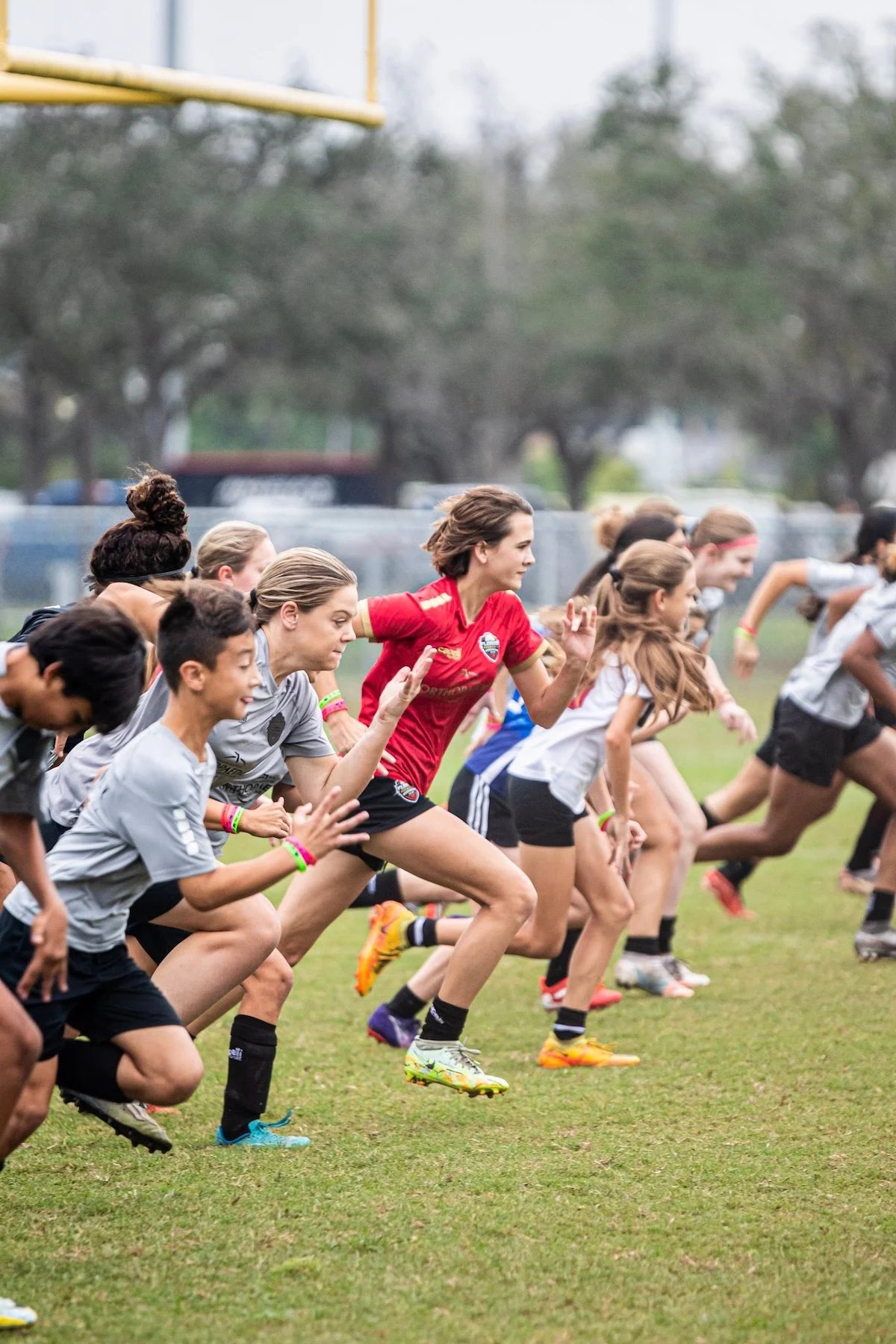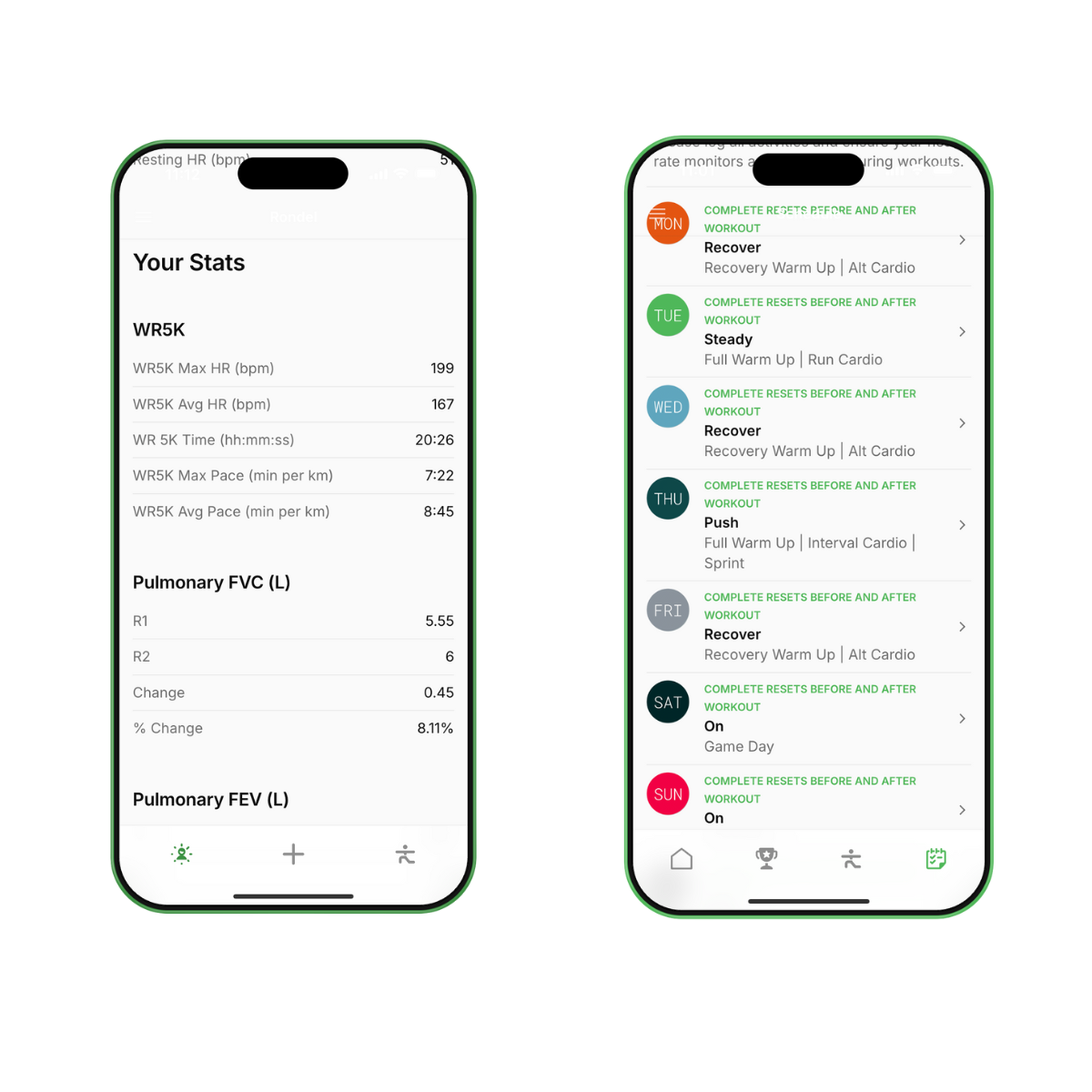Tampa Year 2: When Systems Take Root
WorkRate x Flex Soccer | ESPP23 Field Report
In 2022, we introduced WorkRate protocols to the Tampa soccer community with a simple mission: test what works in the real world. That first year laid the groundwork for something more permanent.
In 2023, we returned with the launch of the WorkRate Elite Soccer Performance Program (ESPP23)—a dedicated system deployment in collaboration with Flex Soccer and Coach Felix Thomas. ESPP23 embedded diagnostics, recovery frameworks, and autonomy training directly into the rhythm of team life.
This is how Year 2 moved from experiment to ecosystem.
What We Deployed
Warm-Up Autonomy: Repeatability Over Novelty
One of our early insights from Year 1 was clear: athletes need structured repetition to build motor memory. So in ESPP23, we resisted the temptation to add variety. Instead, we empowered captains to lead the same warm-up sequence—week after week—strengthening consistency and execution.
Corrective exercises were simplified to improve form quality. We kept the sequence unchanged by design. The goal wasn’t entertainment. It was mastery.
Sprint Diagnostic: Same Test, Stronger Output
We retained our 30-meter sprint diagnostic protocol from Year 1. Consistency across seasons gave us the chance to track real improvement. It also gave athletes a known standard.
The result? Sprint times dropped. Confidence grew. And the test transitioned from something “new” to something athletes used to gauge their own readiness.
JBL Audio Field for Gait Training
The Florida heat challenged our headphone-based cueing system. So we pivoted.
We built an open-field audio environment using multiple JBL Flip 5 speakers placed at corners of the gait track. Athletes moved to external cadence cues—without needing to wear anything on their heads.
This shift created a communal sound space. The outcome was smoother step rate transitions, better cadence matching, and greater focus during gait training and diagnostics.
RET Expansion with Metronomic Audio Cues
The Running Efficiency Test (RET) evolved in Tampa under ESPP23.
We developed a curated audio file that gradually increased metronome tempo as athletes advanced through each stage. Most matched their cadence with the shifts, allowing us to observe gait adaptation, fatigue response, and threshold markers in real time.
RET became not just a diagnostic—but a dynamic entrainment experience.
Physiological Feedback in Real Time
ESPP23 expanded our use of Polar H10 sensors, fully integrating the Polar Club App to capture and reflect real-time heart rate data. This gave both coaches and athletes immediate insight into physiological strain during training and diagnostics.
Strain became visible—not just after the fact, but as it unfolded. Coaches adjusted workloads. Athletes learned to self-regulate.
The data didn’t just validate effort—it shaped smarter effort.
WorkRate Scheduling Model: Precision Meets Practice
With a full year of data behind us, ESPP23 introduced a comprehensive periodization model tailored to the team’s competitive calendar. This helped align physical readiness with match demands, while also preventing overuse.
We embedded a stress management decision system into this model—allowing coaches to make data-informed adjustments in real time. The structure was simple, coach-led, and athlete-centered.
Upgraded WorkRate App: Data in Motion
The Australian build team lead by Co-Founder Janna Szangolies evolved The WorkRate app alongside ESPP23 with a major overhaul:
Periodized training calendar with coach and athlete views
At-home workout plans and logging tools
Streamlined communication between players, coaches, and sports science staff
Ongoing biomechanical self-screen submissions
What we saw: athletes engaged consistently. Logs were clean. Communication sharpened. Data became usable, not just stored.
What We Learned
Speaker Cues Work—With Environmental Limits: The shared sound environment worked well in calm or semi-structured settings. In high-noise contexts (games, busy fields), cue clarity decreased. We learned that sound-based gait training is powerful—but acoustics matter.
Scheduling Created Resilient Athletes: The ESPP23 scheduling framework helped athletes arrive to matches primed—not depleted. Subjective fatigue dropped. Match-readiness increased. Recovery became built-in, not reactive. Players stayed healthy. Coaches stayed confident. The system held.
Athlete Autonomy Became Real: By mid-season, ESPP23 had catalyzed something deeper: autonomy. Players took ownership of warm-ups, RET prep, and peer feedback. They adjusted pacing intuitively and modeled leadership behaviors during sessions. This wasn’t compliance—it was culture. And it was visible.
Real-Time Data Validated Real Adaptation: Heart rate trends told the clearest story. Athletes under ESPP23 were running faster—at lower heart rates. With Polar integration, we saw clear gains in cardiovascular efficiency and running economy, confirmed through hard data. Adaptation wasn’t assumed—it was proven.
Looking Ahead: Year 3 and Beyond
What’s emerging through ESPP23 is more than a training model. It’s a self-organizing system.
Players aren’t just following instructions—they’re leading. Captains initiate warm-ups. Teammates deliver cues. The environment itself reinforces standards. Athletes know when to joke—and when to lock in.
And when it’s time to show technical quality and true “work-rate,” they deliver.
The result? Our athletes were faster, more durable, and more adaptable than their peers. The data confirms it. The behaviors prove it.
Here’s What’s Next
The Running Efficiency Test (RET) entered a new phase in 2023.
What began as a practical field diagnostic is now a structured, evidence-based model. With structured pacing, audio entrainment, and Garmin-integrated data capture, we brought lab-grade insight into live training environments. Thresholds, gait metrics, and cardiovascular response were no longer estimated—they were measured, in real time, on the pitch.
This marked a turning point. RET is now a validated field diagnostic that coaches can trust and athletes can feel. It bridges science and sport without breaking flow.
And this is just the beginning. Year 3 brought the tools to scale it. What started as a test is becoming a system.
WorkRate doesn’t chase performance. We build it. One system, one decision, one athlete at a time.


